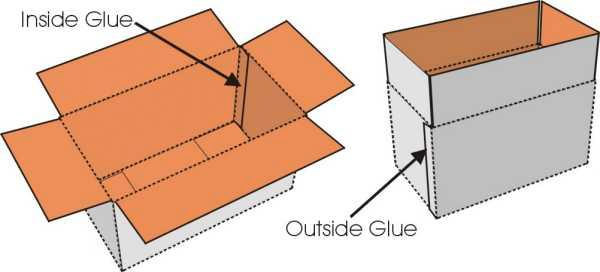Although ordering corrugated boxes isn’t rocket science, understanding the key characteristics of a box will help ensure you order the right box for your application. This article will go over carton dimensions, flutes, walls, joints, and testing. By the end, you will be a corrugated box expert!
Carton Dimensions
There are three dimensions that are used when ordering boxes: Length x Width x Height. When looking at the opening of a carton, length (L) is the longer dimension and width (W) is the shorter. The height (H) is the distance between the two openings of the box (see diagram below). Carton dimensions refer to interior of the box.
Carton Flutes
When you hear someone refer to a carton’s flute type, flutes are the “S” wave or arch of the corrugated box that make up the board. Flutes help add reinforcement to the wall of the box. There are A, B, C, E, and F flutes. Typically, the larger the flute (A & B), the higher the strength and cushioning. Smaller flutes (D&E) allow better foldability and printability.
Carton Walls
Another characteristic of a carton is its wall. There are four types of walls: single face, single wall, double wall, and triple wall. The most common type is the single wall where there is one sheet of flute and it is glued between two sheets of linerboard. Double wall has two sheets of flutes and triple wall has three sheets of flutes. Double wall is also sometimes known as “heavy duty” corrugated material.
Carton Joints
Carton joint is the place where two ends meet. The most common way to join the two surfaces is with liquid adhesives. Usually, there is a tab that extends along one end of the box blank. The tab can be joined to either the inside or outside of the box. If there isn’t a tab, a box must be joined using tape (don’t worry, we sell tape too.)
Carton Testing
The Edge Crush Test (ECT) is used to find out the “stacking” or “crushing” of a piece of corrugate. The higher the ECT, the more weight it will take to crush the corrugate. Therefore, a higher ECT is a stronger box than a lower ECT.
We hope this information will help you determine the best box to get your product to its end destination without damage. Need more help? Call Murphy Packaging at (847)549-1400 for an application analysis and let our packaging experts find the right solution.




